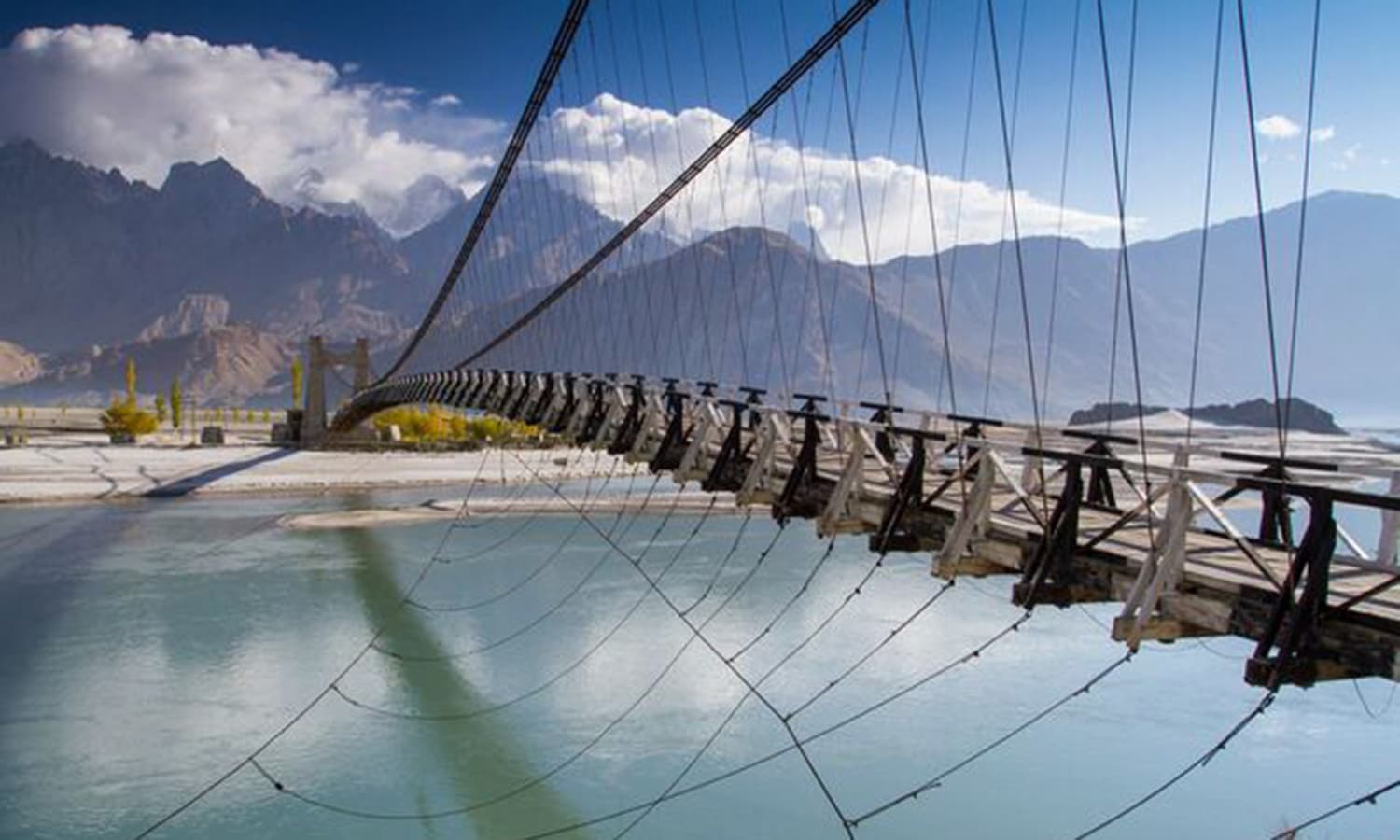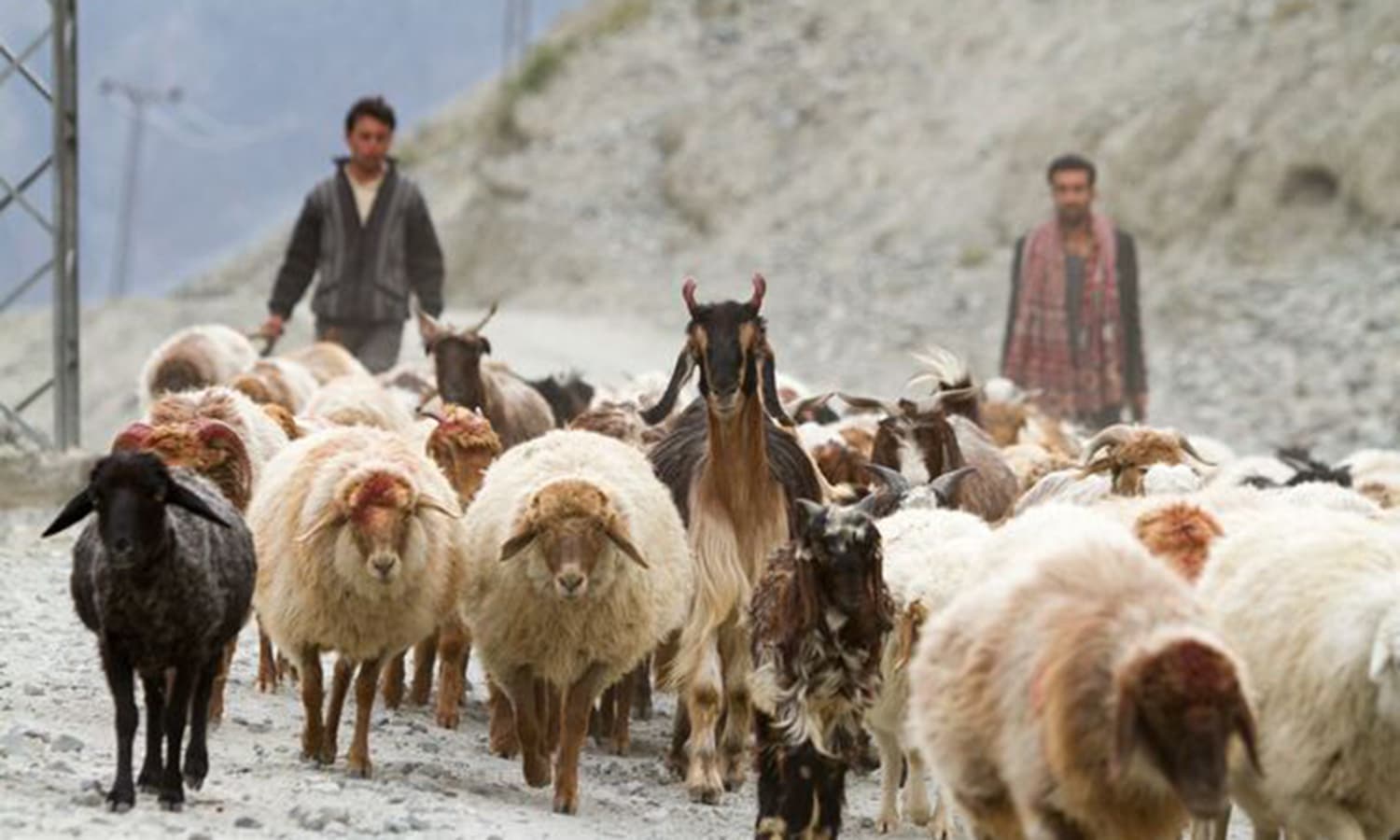China-Pakistan Economic Corridor: A boon for the economy, a bane for locals
Pakistan’s Gilgit-Baltistan region is frequently in the news these days, but not necessarily for its mouth-watering cherries and dried apricots. The much touted US $46 billion China-Pakistan Economic Corridor (CPEC) will pass through this beautiful province in the north to reach Chinese-operated Gwadar port in the country's south. While there is hope it will transform the economy and help bridge Pakistan’s power shortfall, CPEC has also triggered concerns that the local people might be left out of the gains.
To be built over the next several years, the 3,218 kilometre route will connect Kashgar in China’s western Xinjiang region to the port of Gwadar. Currently, nearly 80 per cent of China’s oil is transported by ship from the Strait of Malacca to Shanghai, a distance of more than 16,000 km, with the journey taking between two to three months. But once Gwadar begins operating, the distance would be reduced to less than 5,000 km.

If all goes well and on schedule, of the 21 agreements on energy– including gas, coal and solar energy– 14 will be able to provide up to 10,400 megawatts (MW) of energy by March 2018, to make up for the 2015 energy shortfall of 4,500MW. According to China Daily, these projects should provide up to 16,400MW of energy altogether.
Businessmen like Milad-us-Salman, a resident of Gilgit-Baltistan who exports fresh fruits like cherries, apricots and apples, is hoping that CPEC will be a game-changer for the region. So far, the carefully packaged truckloads of fruit traverse the rundown Karakoram highway to reach the national capital Islamabad, from where they are flown to Qatar, Abu Dhabi and Dubai.
Last year, his company, Karakoram Natural Resources Pvt. Ltd., sold fruit worth Rs20 million (US $190,000). “We sold 30 tonnes of cherries and 100 tonnes of apples,” Salman said.
Hopes and doubts
With the CPEC passing through Gilgit-Baltistan, Salman hopes the route will open business opportunities for the region's traders.
Diverting fruit to China will be more profitable, for one, will be more profitable. “We can double our sales and profits if we can sell to China where cherries are very popular," he said.

Currently, he ships his produce to Dubai through air-cargo. "It would be faster and cheaper if we could send it by road to China via Xinjiang as we can get a one-year border pass to travel within that border," Salman explained.
According to the Asian Development Bank (ADB), Gilgit-Baltistan produces over 100,000 metric tonnes of fresh apricots annually. While there are no official surveys, Zulfiqar Momin, who heads Farm House Pvt Ltd., which exports fresh and dried fruits to the Middle East, estimates that Gilgit-Baltistan produces up to 4,000 tonnes of cherries and up to 20,000 tonnes of apples.
“All fruits grown in Gilgit-Baltistan are organic with no pesticides used,” Momin said.

The CPEC, some believe, will also boost tourism in the 73,000 square km region. The region is considered to be a mountaineer’s paradise, since it is home to five of the ‘eight-thousanders’ (peaks above 8,000 metres), as well as more than 50 mountains over 7,000 metres. It is also home to the world’s second highest peak K2 and the Nanga Parbat.

But development consultant Izhar Hunzai, who also belongs to the area, has no such expectations. The CPEC, he feels, is nothing more than a “black hole” as far as the people of the region are concerned.
“The government has not engaged with us; we do not know exactly how much or what Gilgit-Baltistan’s role will be in CPEC or how we will benefit from it,” he said.
While both Pakistan and China will benefit through this region, he feels his people will be left “selling eggs”.
“I fear when the region opens up, it will give short shrift to the locals," he added.
Also read: China’s new silk road: What’s in it for Pakistan?
Land of opportunities
But it does not necessarily have to be this way. According to Hunzai, the region has infinite water resources to tap.
“By building hydro power projects, Pakistan can sell clean energy to China and even use it for itself, the development consultant said. "If Bhutan can sell to India, why can’t we sell to China?” Hunzai poted out that the Chinese already taking the country’s national grid to its border province.
It made little sense to him that the Pakistan government wanted to buy 1,000MW of hydropower from Tajikistan under the Central Asia South Asia (CASA-1000) project and construct an expensive 750km transmission line when the resource was right there in the country’s own backyard.

However, the government is almost ready to revive the Diamer-Bhasha dam, a gravity dam on the Indus river in Gilgit-Baltistan, in the second phase of CPEC. Once completed, it is estimated to generate 4,500MW of electricity, besides serving as a huge water reservoir for the country.
Hunzai also lamented the government’s decision of buying discarded coal powered plants from China and using imported coal to run it. Doing some quick calculations on the back-of-the-envelope, he asked, “Why produce 22 cents per unit electricity from imported fuel and sell it to the people at a subsidised rate of 15 cents? Why not make electricity from hydropower which would cost just 0.02 cents?”
According to the ADB, Gilgit-Baltistan has the potential to produce nearly 50,000MW of energy. Just Bunji Dam, a run-of-the-river project that the ADB has invested in, has the capacity to generate up to 7,100MW electricity when completed.

The government is not wilfully neglecting the region, countered long-time hydropower advocate Tahir Dhindsa of the Islamabad-based Sustainable Development Policy Institute. Instead, he feels the problem is more about the profits that middlemen make. It is all about the “kickbacks and commissions” that one can earn quickly from “cheap and carbon-spewing coal power plants”, compared to almost none from hydropower projects that can take up to 10 years or more.
Explore: Paris climate summit: An opportunity missed for Pakistan
“The future is renewables as has been reiterated in Paris at the COP21 and Pakistan should seriously be thinking about its future course of action,” he said.
Demographic shift
There is also the fear that the CPEC may lead to widespread displacement of the locals. “Of the 73,000 square kilometres, cultivable land is just 1pc," Hunzai explained. "If that is also swallowed by rich investors from outside, we will become a minority and economically subservient once there will be no farmland or orchards left to earn our livelihood from."

He is not the only one. Given the secrecy and confusion surrounding the project, its design and its budgetary allocation, three of Pakistan’s four provinces recently held a well attended All Parties Conference (APC) and vented their anger at the central government for its opaqueness regarding the share of investments for each of the provinces.
“CPEC is not the problem. It has just highlighted the imbalance in provinces with the largest one, Punjab, being seen as favoured specially as far as investments on road infrastructure are concerned and fuelling bitterness among the rest of the three provinces,” rued Vaqar Zakaria, an energy expert heading Hagler Bailley.
Trying to address the concerns of the provinces soon after the APC, federal minister for planning, Ahsan Iqbal, who heads the Planning Commission of Pakistan, said in a television interview that this was not a time for scoring political points by making the project controversial. CPEC, he said, was not a project to benefit a party or a government as was being portrayed by politicians and the media but to the entire country.

Of the US $46bn, between $35bn to $38bn were earmarked for the energy sector– of this, $11.6bnwill be invested in Khyber Pakhtunkhwa, $11.5bn in Sindh, $7.1bn in Balochistan and $6.9bn in Punjab.
Beijing has urged Islamabad to resolve the internal differences on the CPEC to create favourable working conditions for the project to roll out smoothly.

—This piece was first published on The Third Pole and has been reproduced with permission.





